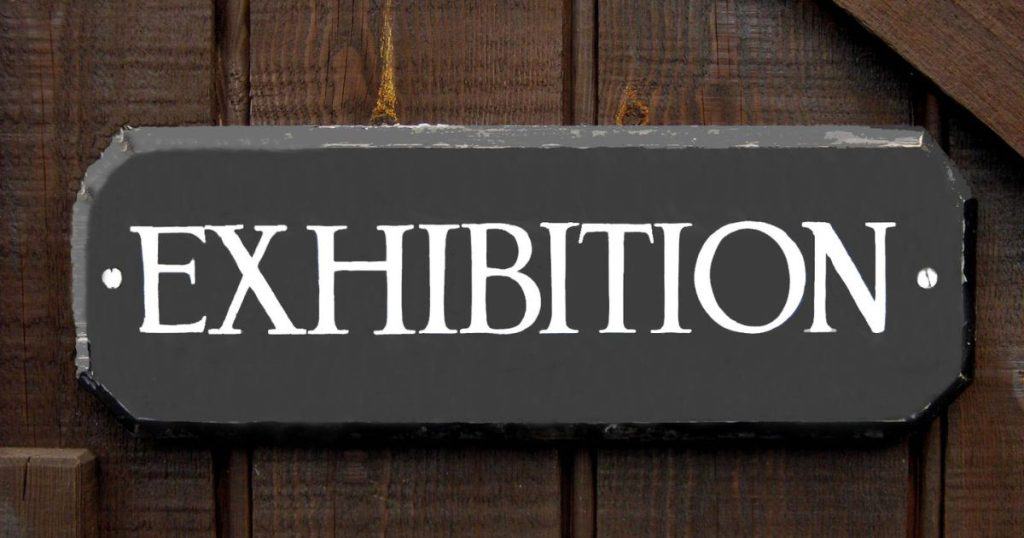Exhibiting at events is a thrilling professional option. A day in the life of an event exhibitor is never the same, unlike an average city employment. Enrolling in online event planning certification courses will help you thrive in the industry even if you don’t have experience in business management, whether you want to create your own event planning platform or become a professional event exhibitor. The same is true for development into a prosperous event coordinator.
Take note that while some go to school to become a successful event exhibitor, another popular route to launch your profession is to become an event planner without a degree, which can be beneficial in terms of cost and duration. Nonetheless, smart preparation, potent advertising, and lively interaction with guests are necessary for event exhibitors to succeed. You may make the most of your effort and succeed as an event exhibitor by adhering to these guidelines and making use of the available tools. We’ve provided you with some thorough instructions to assist you succeed in your business right here.
You may have missed: How to Become a Virtual Event Planner
How to become a successful event exhibitor
Establish Specific Goals:
Establish clear objectives for your exhibition. This could involve releasing new items, products, generating leads, building brand awareness, or closing deals directly.
Have a Budget:
To guarantee that your exhibition will yield a profit for your company, precise financial planning is required well in advance of the show. To keep things from getting out of control, budget levels must be maintained. Establish a budget that accounts for personnel, show space, transportation, stand layout and hire, catalogs, handouts, and giveaways at events.
Select the Appropriate Event:
Pick occasions that will draw the people you want to reach. Think about things including the event’s size, location, expenses, and industry reputation. Look into earlier occasions and talk to former exhibitors to determine the possible return on investment of the event.
Teach Your Employees:
Make sure all your staff is ready to interact with guests. Give instruction on lead-capturing strategies, sales tactics, and product understanding. Stress the value of being personable, professional, and kind.
Who Else Is Exhibiting?
It’s important to know exactly which competitors will be there before you enter the trade show floor. This information includes an analysis of their strengths and flaws in addition to knowing who they are. If they are a regular participant, you can also obtain this information from previous events or via the official web page of the event coordinator, where exhibitors are frequently listed. Insights about rival activities and tactics can also be gained by reading business periodicals and going to pre-event networking gatherings.
Plan the Look of Your Booth:
 Make your vendor booth unique, useful, and welcoming. To attract customers, use open layouts, conspicuous images, and unambiguous signage. Interactive components that boost engagement include live chats, augmented reality occasions, and product demos. Use your website, email newsletters, press releases, and social media to publicize your involvement. To draw people to your booth, provide incentives like unique previews, deals, or competitions.
Make your vendor booth unique, useful, and welcoming. To attract customers, use open layouts, conspicuous images, and unambiguous signage. Interactive components that boost engagement include live chats, augmented reality occasions, and product demos. Use your website, email newsletters, press releases, and social media to publicize your involvement. To draw people to your booth, provide incentives like unique previews, deals, or competitions.Knowing Your Audience:
Adapting your trade show strategy requires an in-depth knowledge of the socioeconomic and psychological makeup of your audience. Understanding their sector, job responsibilities, difficulties, and potential solutions is part of this. For instance, if you are a vendor at a technology trade event, tech-savvy professionals looking for innovative solutions should find value in your booth and presentations. You can develop a comprehensive profile of your projected audience by using pre-event data, such as participant lists supplied by the event organizers or statistics from previous events. That is one importance of statistics in business.
Evaluate:
Evaluate the results in relation to your original goals in order to determine success. Metrics might include social media interaction, sales, brand impressions, and the number of leads created. Make improvements to your strategy for upcoming events based on input from staff and guests.
Engage Visitors Effectively:
Develop a strategy for quickly and effectively engaging with visitors. Use open-ended questions to understand their needs and how your products or services can help. Collect contact information and take notes on conversations for follow-up.
Follow-Up:
Promptly follow up with leads collected during the event. Personalize your communications based on the interactions you had. Track the success of your follow-ups and refine your strategy for future events based on what worked and what didn’t.
How to Win an Exhibition
Grabbing your audience’s attention at trade shows can be a tough task. With numerous brands and competitors displaying their products, your brand needs to rise above the noise and distinguish itself from the rest. To achieve this, it’s important to revisit the drawing board and come up with exhibition stand design concepts that align with your brand identity.
- Aesthetic stand design: Investing in a custom exhibition stand design is one of the best ways to outshine the competition. A booth that captures attention and authentically represents your brand’s personality can make a lasting impact on visitors. Creative and distinctive booth designs help your brand stand out, ensuring you’re noticed amid the crowd.
- Promote your brand: After obtaining a premium space at the trade show and selecting a customized exhibition booth design, use the following steps is to publicize and get to market your event. Advertising your business at the trade show will ensure a solid turnout.

- Use up-to-date designs: It is crucial for brands and enterprises, including exhibition stand rentals, to keep up with market trends. Keep your stand lively and on-trend, and integrate aspects that appeal to a younger demographic while complementing your brand’s image. Several companies fail to engage with their consumers because they use outdated instruments and tactics. Remember to play the best event music at your stand.
- Gamification: Determine whether you want your stand to be fun or sophisticated. A little amount of gaming and fun may elevate your brand and business, even if you serve an adult clientele. Arrange conversations at your exhibit, including games and questions, based on the item being sold and the target audience. It will assist you in presenting a warm image and drawing more people to your booth.
- Give away treats: Giving gifts and prizes is another approach to gaining favor with the audience. Post advertisements at your trade show booths inviting people to share a photograph of your shows or to tag their location.
Conclusion
Exhibiting at events presents a dynamic career opportunity that can be enhanced through strategic planning, effective engagement, and a strong understanding of the target audience. By implementing thoughtful preparation and innovative marketing techniques, event exhibitors can significantly increase their chances of success and stand out in a competitive environment.




